Pfizer’s Wyeth purchase includes remnants of the old A.H. Robins company
 RICHMOND – The merger between Wyeth and Pfizer got us thinking about the legacy of the Albert Hartley Robins company, better known as A.H. Robins. While the name A.H. Robins is gone, the Robins influence shows in the highly profitable brands that are within the Wyeth pharmaceutical company, namely Dimetapp, Chap Stick and Robitussin.
RICHMOND – The merger between Wyeth and Pfizer got us thinking about the legacy of the Albert Hartley Robins company, better known as A.H. Robins. While the name A.H. Robins is gone, the Robins influence shows in the highly profitable brands that are within the Wyeth pharmaceutical company, namely Dimetapp, Chap Stick and Robitussin.
So we pulled out An Angel on My Shoulder, the 1995 biography of E. Claiborne Robins by Juliet E. Shield, his grand-daugher. Robins was the man who made the Richmond-based company grow. In it, he details how he grew the company into a pharmaceutical giant. Early on, they called themselves not a pharmaceutical company but a manufacturing chemist.
The company, founded in 1896, grew with the idea that it would try to find effective cures with quality ingredients. Its roots were from A. H. Robins c. 1866 pharmacy. It was a time of snake oil, when medicines like asafetida were popular; asafetida was a so-called “fetid gum resin” that was sold to prevent disease and children wore bottles of it around their necks to prevent illness.
Little Grey Pills
An early product at Robins was Robins Cascara Compound, which was made by Albert Hartley Robins himself in the back of his Richmond pharmacy as a cure for indigestion. Smith Kline also made products for Robins, including Bironex.
Like so many others in this time, company was terribly nimble and innovative, even though it had no capital and few resources. In addition, it was located outside the giant New York/New Jersey pharmaceutical hub.
The folks at Pfizer, who seem to need a few ideas, should take a look at this book about E. Claiborne Robins. If they are too lazy to hunt it up, we have presented a few ideas from E. Claiborne Robins here.
- Sub out production and sell, sell. Early on, he outsourced production, including getting a Merck predecessor company to make Robins’ Cascara pills. This wasn’t because of a silly management theory about whether they should or shouldn’t outsource because of a philosophy. It was whether it worked at that moment.
- One leading doctor can make you or break you: A Kansas City physician, a Dr. Krawl, helped build Robins as a company after World War II as he was one of the first to heavily prescribe Donnatal, a versatile drug for nerves and gastro and spastic disorders. Donnatal, introduced in 1934, is now sold by PBM Pharmaceuticals of Gordonsville, Virginia.
- Hire researchers as soon as you have extra profits: A key to the company’s growth was research; as soon as it made extra money, it hired great physicians and pharmacists, and set them to work finding new drugs. Pfizer seems to be getting rid of research; how that pays off I am not sure. It sounds more like a “run-out-the clock” theory.
- Success is not always about research. Robitussin, introduced in 1949, was the hit product for Robins, and still produces millions in profits for Wyeth. But it was not discovered in a lab, but instead was found in a scientific journal, for all to see. Robins just figured out how to market it.
- Repetition, bang, bang, bang. Sales is repetition. “The secret was we were able to just pound them. We didn’t have that much. We didn’t have 500 products to work, and we could just really concentrate on them. The old repetition, just bang, bang, bang. I think that was one of the secrets.”
- Robins never sold at sponsored dinners. They just would thank doctors, over and over again.
- Salesmen are made, not recruited. “We were reputed to have the best sales force in the entire pharmaceutical industry….I believe that maybe we picked some ordinary salesmen and made them into better ones.”
- Wins might be losses. What drove Robins into bankruptcy was the Dalkon Shield, which was invented by a physician at Johns Hopkins named Dr. Hugh Davis. Robins and Upjohn got into a bidding war over the patent, and Robins won. Then Robins lost.
- Sell regulated products AND consumer products. Pfizer made a horrible mistake by selling off its consumer products and now has to get some back by buying Wyeth’s. Companies need to have both regulated and unregulated products. Not to mention the obvious fact that some prescription products become over the counter, ensuring quality distribution and relationships with grocery and drugstore chains is helped by volume. If you don’t have over the counter, you become dependent on profits from hit prescription drugs, which can disappear when the drugs go generic.
Below is the list of the A.H. Robins product names before their Chapter 11 filing due to the Dalkon Shield. We divided them into over-the-counter and prescription, though some might be in the wrong category, so we hope if any chemists or folks can help us out, please leave a comment at the end of the story:
Over the counter
- Adabee vitamins
- Albee B Complex vitamins
- Campetrodin antiseptic dressing
- Caron Perfumes
- Chap Stick, actually purchased and moved from Lynchburg’s Miller-Morton company
- Cough Calmers
- Dimacol
- Dimetane antihistamine
- Dimetapp antihistamine and decongestant
- Donna Extentabs belladonna Alkaloids with extended action
- Donnagel antidiarrheal, made with belladonna
- Donnagesic/Donnatal plus an analgesic
- Donnalate, an antacid and sedative
- Donnazyme, a digestant
- Dopram
- Entozyme, a digestant
- H-P-V capsule vitamins, formerly Hy-Po-Vita
- Lip Quencher cosmetics (these were the ones Lynda Carter advertised
- Lip Soother
- Lip Treat lip gloss
- Robalate antacid
- Robins Cascara Compound, a “mild and strong” laxative
- Robitussin cough syrup was introduced in 1949; some of it originally had codeine
- Sergeant’s flea and tick collars and pet care
- Silain antacid
- Uralithic salt, an antiseptic
- Viokase, a digestive
- Z-bec, Vitamins with zinc
Prescription Robins Drugs
- Ambar methamphetamine with phenobarbital
- Arthralgen antirheumatic analgesic
- Bironex hematinic
- Dalkon Sheild
- Dopram, a respiratory stimulant
- Exna, a diuretic
- Mephate, a skeletal muscle relaxant and CNS Sedative
- Micro K potassium chloride
- Mitrolan, a laxative and anti-diarrheal of calcium polycarbophil
- Pabalate, an antirheumatic
- Phenaphen, an analgesic and sedative, formerly Phenacetin with Phenobarbital, changed to acetaminophen, and some preparations had codeine
- Pondimin, an anorectic of fenfluramine hydrochloride
- Quinidex, a long acting form of quinidine sulfate
- Reglan, a gastric emptying antiemetic
- Robamox, Robicillin, Robimycin, Robitet antibiotics
- Robinul, an anticholinergic
- Sedobarb, a sedative and hypnotic, phenobarbital with pentobarbitol
- Tenex, an anti-hypertensive of guanfacine hydrochloride
- Theorate, a diuretic stimulant


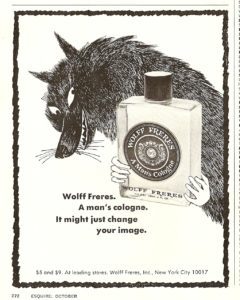
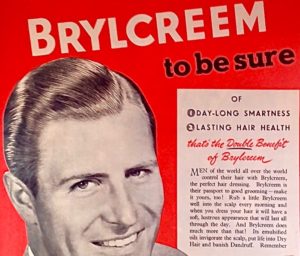
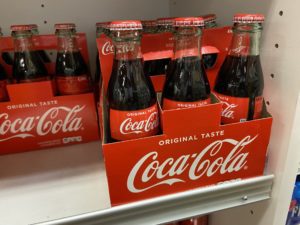
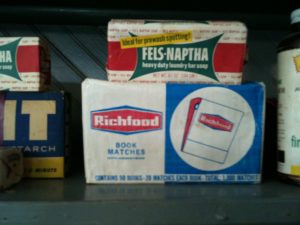

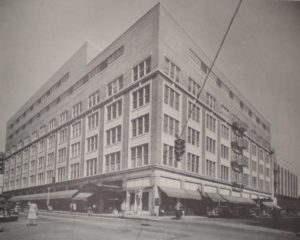
I like your tip about how marketing can amplify research funds. That makes sense considering people will be more interested in the pill if they know about it. This all reminds me that I need to get pain meds for my dog.
where can I get Mitrolan ? It worked so well for me ,but could not find it after Robins went out of business. when I used it, one did not need a script from Dr .,but purchase had to be at pharmacy counter. please help if you can.thanks
Iwant to know jour adress in colombia becouse I worked for this compani by de 70 and now I need my pension from the social security en colombia with MISS MATILA IN conection with LANTIK cosmetics please helpme on this matter
Don’t forget A.H.Robins also owned a Hockey Team in Richmond, Virginia, the Richmond Robins. I played on that team in the 73-74 and 74-75 seasons. Mr. Robins donated a lot a money to the University in Richmond, and did a lot of good things. I am writing about my 21 year hockey odyssey around the globe right now.
It would be nice if A. H Robins were to buy back Legacy Wyeth’s ChapStick and Robitussin
I was one of the first people they hired when they officially started the OTC divison in 1982. I think there were 21 of us in the first class and two are left. I left happily in 2003 when they closed the office in L.A. It was the BEST move I ever made.
Initially A.H. Robins Consumer Products Division was run by a bunch of Rx guys that had no clue what they were doing but had a lot of good products and some innovation and good people.
Wyeth consumer has no innovation and is managed by a bunch of guys that have no clue what they are doing. No innovation. Example, there new product is Chap Stick in a jar (sound familiar????)
Ironically the Dalkon Shield was the first strike and Pondimin (one of the Phen fen drugs) was the second blow. With Dalkon Shield they were snookered by greedy doctors and then A.H. Robins looked the other way. Phen Fen – once again greed and profit brought down the company.
I remember when the head of finance told all of us that Phen Fen would not cost Wyeth more than $3 billion; so much for his forecast.
I now work for a small company that we just sold to GSK for $170,000,000. When I was looking for a buyer talked to Wyeth and never received a return call as five other companies were bidding to buy Laclede.
cheers
Harvey
I believe the product was very successful for many patients. Following proper procedure for placement of the item was of the upmost importance, which was the responsibility of the physician not A. H. Robins. Many people were affected but playing the blame game is a waste of time. Saying a prayer for everyone involved would be much more healing and positive.
Helen, thanks for your comment on the Dalkon. I passed it over in detail for the reason that I felt like emphasizing the Dalkon was rather like mentioning that the Titanic sank. Robins lost the company over it, and the story has been told many times. In Richmond (where I am from) and in pharmaceutical circles, it is a cautionary tale known far too well.
You so glibly pass over the reason the Dalkon Shield caused the bankruptcy of A.H. Robins. It was a poorly designed product, with no oversight, and when the problems surfaced (deadly infections, sterility, birth defects) Robins went bankrupt, and did not take responsibility for ruining many, many lives.